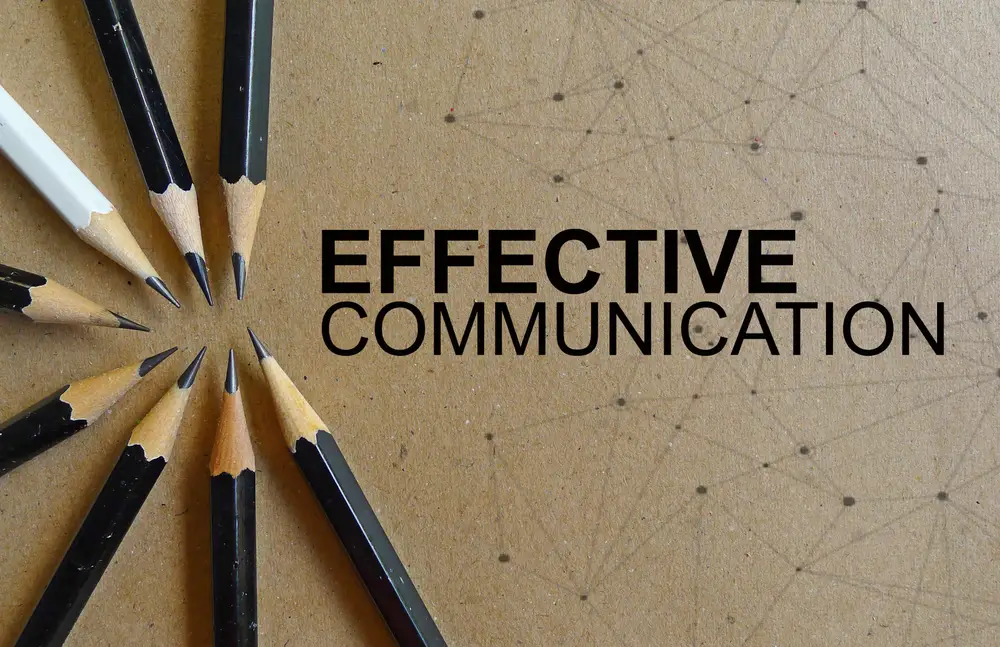Poor communication causes 70% of project failures. This highlights the vital role of effective communication in project success. A well-structured communication plan is crucial for keeping your project on track. It sets clear guidelines for information sharing and responsibilities.
This approach streamlines communication efforts and ensures everyone stays informed. It helps your team achieve project goals more efficiently. A good plan can make the difference between success and failure.
A project communication plan is a simple yet powerful tool. It strengthens every aspect of your project. The plan sets clear expectations for updates and establishes written documentation. It also provides a roadmap for effective stakeholder communication.
Implementing a communication plan offers numerous benefits. It reduces random requests for updates and increases project visibility. The plan boosts team meeting productivity and keeps the project aligned with its objectives.
This article will guide you through creating an effective project communication plan. We’ll explore key components and discuss the benefits of having one. You’ll also find tips for choosing the right communication channels and methods.
A well-crafted plan is invaluable for any project size. It keeps everyone informed, engaged, and working towards a common goal. Let’s dive into the essential elements of a successful communication strategy.
Key Takeaways
- A project communication plan sets clear guidelines for sharing information and identifies responsibilities for project communication.
- Effective communication plans can increase project success rates by up to 50%.
- Communication plans should include objectives, message structure, key communication channels, frequency, and a timeline.
- Stakeholder engagement through clear communication strategies can improve deliverable efficiency by 25%.
- Utilizing online collaboration tools can boost team productivity and efficiency by 30%.
What is a Project Communication Plan?
A project communication plan outlines how information will be shared with stakeholders throughout a project. It serves as a roadmap for effective communication, ensuring all parties stay informed and engaged. This plan streamlines efforts, reduces misunderstandings, and fosters collaboration for project success.

Studies show regular communication boosts team productivity. A structured approach allows project managers to receive feedback and address issues early. Tools like Slack, email, and instant messaging can consolidate project information, reducing queries and improving workflow efficiency.
Key Components of a Project Communication Plan
An effective project communication plan includes these key components:
- Communication requirements: Define what information needs to be communicated and in what format.
- Communication goal: Ensure that every communication has a clear purpose and aligns with the project’s objectives.
- Communication method: Specify the channels and tools that will be used for communication, such as emails, meetings, or project management software.
- Communication frequency: Determine how often updates and information will be shared with stakeholders.
- Communication lead and target audience: Identify who is responsible for delivering the communication and who will be receiving it.
Benefits of Having a Project Communication Plan
A well-defined project communication plan offers numerous benefits. It reduces random update requests by providing a structured approach to information sharing. The plan outlines where important information resides, making it easier for team members to access relevant data.
Project visibility increases as stakeholders stay informed and engaged throughout the process. Team members can voice concerns and contribute ideas through feedback opportunities. Meeting productivity improves with focused discussions aligned with project goals.
- Reducing random requests for updates by providing a structured approach to information sharing.
- Outlining where important information resides, making it easier for team members to access relevant data.
- Increasing project visibility by keeping stakeholders informed and engaged throughout the project.
- Providing opportunities for feedback, enabling team members to voice their concerns and contribute ideas.
- Boosting meeting productivity by ensuring that discussions are focused and aligned with the project’s goals.
- Ensuring project alignment with overall objectives by regularly communicating progress and milestones.
Tailoring the communication plan to project and team needs builds trust and reliability. This promotes shared understanding among team members and stakeholders, leading to smoother project execution and successful outcomes.
Determining Your Project’s Communication Needs
Assessing your project’s communication needs is crucial for success. This step ensures your plan meets the unique demands of your project and stakeholders. Tailoring your approach will lead to more effective communication throughout the project lifecycle.

Identifying Stakeholders and Their Communication Preferences
Start by conducting a thorough stakeholder analysis. Identify all key players involved in your project, including clients and team members. Note their preferred communication methods and frequencies.
Some stakeholders may prefer email updates, while others might favor video conferences. Understanding these preferences early on helps cater to everyone’s needs. This approach ensures all parties receive information in their preferred format.
Assessing the Project’s Size and Scope
The project’s size and scope significantly impact communication needs. Larger, complex projects often require more frequent and detailed updates. Consider the nature of the work, timeline, and client preferences when assessing scope.
A project scope template can guide you through outlining key details. This tool helps define objectives, deliverables, and constraints. Clear scope definition equips you to identify specific communication needs for your team and stakeholders.
Consider conducting a communication needs assessment at the project’s start. Use surveys or interviews to gather stakeholder insights. This process fosters engagement and provides valuable information about communication expectations.
| Communication Tool | Benefit |
|---|---|
| Slack | Enables real-time collaboration and communication among team members |
| Google Workspace | Provides a suite of tools for document sharing, video conferencing, and email communication |
| Zoom | Facilitates virtual meetings and webinars for remote teams and stakeholders |
| Gmail | Offers a reliable and widely-used platform for email communication |
Assessing communication needs, identifying preferences, and using the right tools are crucial steps. These actions set the foundation for an effective project communication plan. With this approach, you’ll keep everyone informed and aligned throughout the project.
Setting Communication Goals and Objectives
Clear communication objectives are vital for project success. They ensure focused efforts that contribute to overall goals. Key objectives include team cohesion, stakeholder feedback, accurate record keeping, and best practices adherence.
Reviewing past projects helps identify effective processes. Analyze post-mortem findings and lessons learned to establish best practices. Incorporating these insights optimizes communication strategies and prevents past mistakes.

Keep goals at the forefront when outlining the communication schedule. This supports project objectives and prevents scope creep. Aligning updates with project goals maintains focus and ensures purposeful communication.
“The single biggest problem in communication is the illusion that it has taken place.” – George Bernard Shaw
| Communication Objective | Strategies |
|---|---|
| Team Cohesion | Regular team meetingsTeam building activitiesCollaborative tools and platforms |
| Stakeholder Feedback | Scheduled progress updatesSurveys and questionnairesOne-on-one meetings |
| Record Keeping | Project management softwareStandardized documentation templatesRegular status reportsProject management software |
| Best Practices | Consistent communication channelsClear roles and responsibilitiesContinuous improvement initiatives |
Clear objectives and strategic implementation foster collaboration and accountability. This approach enhances project delivery, meeting stakeholder needs effectively. A well-crafted communication plan drives continuous improvement and project success.
Choosing the Right Communication Methods
Selecting appropriate communication methods is vital for an effective project communication plan. The right mix of synchronous and asynchronous channels streamlines progress and reduces misunderstandings. This approach keeps your team and stakeholders informed and engaged throughout the project.

A recent survey reveals that knowledge workers spend 60% of their time on non-core tasks. These include searching for documents and chasing approvals. A well-structured communication plan can minimize these inefficiencies, keeping your team focused on essential tasks.
Synchronous vs. Asynchronous Communication
Synchronous communication includes real-time meetings, phone calls, and video conferences. It’s ideal for sharing information that needs immediate feedback or discussion. These methods enable quick decision-making and problem-solving, fostering collaboration and team cohesion.
Asynchronous communication, like email updates and message boards, suits non-urgent information sharing. These channels allow team members to process information at their own pace. This reduces interruptions and enables focus on core responsibilities.
“Transparency in communication leads to better knowledge sharing, trust building, and keeps employees updated.”
Selecting Appropriate Communication Channels
When choosing communication channels, consider the nature and urgency of the information. Also, factor in team and stakeholder preferences, along with available tools and resources. For critical milestones or client feedback, opt for synchronous methods like video calls.
- The nature of the information being shared
- The urgency of the message
- The preferences of your team and stakeholders
- The tools and resources available to your organization
Regular progress updates can be shared via asynchronous channels like email or project management software. This approach ensures efficient information dissemination while respecting team members’ time and focus.
| Communication Method | Best Used For |
|---|---|
| Video Calls | Real-time collaboration, critical discussions, and client meetings |
| Email Updates | Regular progress reports, non-urgent information sharing, and documentation |
| Message Boards | Team discussions, idea sharing, and problem-solving |
| Instant Messaging | Quick questions, clarifications, and informal communication |
A well-structured communication plan minimizes confusion and misunderstandings among team members. This leads to increased efficiency and improved project outcomes. Carefully selecting the right methods ensures your team stays informed, engaged, and productive throughout the project lifecycle.
Establishing a Communication Schedule
A well-defined communication schedule is vital for successful project management. It streamlines processes, sets clear expectations, and keeps stakeholders informed. This approach ensures engagement throughout the project lifecycle.
Determining Communication Frequency
Start by identifying the types and frequency of meetings needed. Weekly team meetings can address progress and challenges. Monthly stakeholder updates provide high-level project status overviews.
Consider asynchronous updates like email bulletins and status reports. Keep these concise and informative. Tailor messages to specific audiences for relevance and value.
Creating a Communication Timeline
Develop a timeline outlining when to share specific information. Align this with project milestones and deliverables. Ensure timely updates on progress and potential issues.
When crafting your timeline, follow these best practices:
- Limit project updates to once a week at most to avoid overwhelming stakeholders with too many emails or reports.
- Use a project management plan to consolidate all essential information into one easily accessible document.
- If possible, create a meeting schedule early to ensure that all participants can attend and have sufficient time to prepare.
- Utilize online scheduling tools to find the best times for your team to meet, taking into account different time zones and availability.
A structured communication schedule fosters transparency, collaboration, and accountability. It keeps everyone informed and aligned, preventing miscommunications that can derail projects.
Effective communication plans outline how and when to communicate during a project, ensuring everyone is on the same page.
Many organizations use content calendars or Gantt charts for communication strategies. These tools create visual representations of timelines, clarifying roles and responsibilities.
Assigning Communication Roles and Responsibilities
Project managers often handle most project communication. However, assigning roles to team members is crucial for effectiveness and accountability. Delegating communication ownership creates accountability and maximizes the potential of our communication plan.
Identifying the audience for each communication type is essential. This prepares key players with updates when needed, fostering transparency and collaboration. Providing a written work-back schedule outlines expected information and timing, ensuring clarity and facilitating delivery schedules.

Streamline communication by determining who shares what information and with whom. Organize stakeholder and team member contact details for efficiency. This reduces miscommunication and missed updates.
“The single biggest problem in communication is the illusion that it has taken place.” – George Bernard Shaw
Consider these statistics when assigning communication roles:
- 48% of employees and HR professionals identify insufficient communication as the primary source of workplace stress.
- In 2021, only 21% of the global workforce reported feeling engaged in their jobs.
- Lack of engagement or active disengagement resulted in an $8.8 trillion loss in productivity in 2021.
Create a matrix or table to clearly define communication roles and responsibilities. Include communication type, responsible party, audience/stakeholders, and frequency.
| Communication Type | Responsible Party | Audience/Stakeholders | Frequency |
|---|---|---|---|
| Project Status Updates | Project Manager | Client, Team Members | Weekly |
| Risk Management | Risk Manager | Project Manager, Team Leads | Bi-weekly |
| Technical Updates | Lead Developer | Project Manager, Client (if required) | As needed |
| Budget and Timeline | Project Manager | Client, Upper Management | Monthly |
Clear communication roles foster accountability and improve collaboration. This ensures smooth project management. Remember, effective communication is the foundation of successful projects.
Implementing Your Project Communication Plan
It’s time to activate our project communication plan. Effective implementation is vital for success, especially in remote and hybrid work settings. Let’s explore strategies for clear communication throughout the project lifecycle.

Communicating with Remote and Hybrid Teams
Remote and hybrid work environments pose unique communication challenges. Teams spread across locations and time zones require adapted strategies. Here are tips for effective remote team communication:
- Embrace asynchronous communication tools like email, instant messaging, and project management platforms to keep everyone in the loop, regardless of their work schedule.
- Establish clear guidelines for response times and communication etiquette to ensure timely and professional interactions.
- Utilize video conferencing for regular check-ins, team meetings, and one-on-one discussions to maintain a sense of connection and collaboration.
- Create a centralized repository for project documents, updates, and resources, making it easy for team members to access the information they need at any time.
Best Practices for Effective Project Communication
Follow these best practices to maintain clarity, consistency, and efficiency in our communications:
- Keep messages concise and to the point, focusing on the most relevant information for each stakeholder group.
- Use templates and standardized formats for reports, updates, and other regular communications to ensure consistency and readability.
- Tailor the level of detail and frequency of communication to each stakeholder’s needs and preferences, avoiding information overload.
- Encourage open and transparent communication, fostering a culture of trust and collaboration among team members.
- Regularly review and adjust the communication plan as the project evolves, ensuring it remains effective and relevant throughout the project lifecycle.
Implementing these practices ensures our project communication plan’s effectiveness. Clear, concise communication keeps everyone informed and engaged. This approach aligns team efforts towards our shared project goals.
Communication Plan Templates
A well-crafted communication plan is vital for project success. We’ve gathered various templates to suit different project needs. These templates provide a solid base for your communication strategy.
You can customize them to fit your specific requirements. They ensure all essential elements are included in your plan.
Simple Matrix Communication Plan Template
A matrix template outlines project communications efficiently. It covers all the basic elements of a good communication plan. The template includes a grid listing communication types, audiences, frequencies, delivery methods, and responsible persons.
This visual organization makes it easy to keep everyone informed. It ensures all team members stay on the same page throughout the project.
Communication Plan Template by Method
Grouping communications by delivery method can be beneficial. This template defines channels for each update type, such as emails, meetings, reports, or presentations.
It ensures information flows through appropriate channels. Team members can easily find the information they need. This approach streamlines communication efforts and reduces confusion among stakeholders.
Project Communication Plan Template by Audience
Structuring your plan by audience is another effective approach. This template outlines who receives which communications throughout the project. It includes stakeholders, team members, and other relevant parties.
Tailoring communications to each audience improves engagement. It builds trust and fosters a collaborative project environment. No one misses important updates with this method.
Choose your preferred format from our editable project templates. Options include matrix, method-based, or audience-based communication plans. Customize the details to fit your project, team, and stakeholders.
These templates guide you towards a comprehensive communication strategy. They help keep everyone informed, engaged, and aligned throughout your project’s lifecycle.

Monitoring and Adjusting Your Communication Plan
Regularly reviewing our communication plan is vital for project success. These reviews help us assess how well our team receives information. By monitoring effectiveness, we can identify areas needing adjustment to ensure continuous improvement.
Tailoring our approach to each individual’s needs is crucial. All plans should be flexible enough to adapt as projects evolve. Focusing on preferred methods and frequency maintains high engagement levels.
Projects often experience scope creep or growth over time. It’s essential to account for significant changes in communication needs. Proactively addressing these changes prevents gaps and keeps everyone well-informed.
When reviewing, consider parallel teams’ needs and take a big-picture view. Prioritize deadlines for specific information or files in the plan. Aligning communication efforts with project goals fosters a collaborative work environment.
“Effective communication is the key to successful project management. By regularly reviewing and adjusting our communication plan, we can ensure that our team and stakeholders have the information they need to excel.”
To optimize project communication, consider these tips:
- Schedule regular check-ins to gather feedback on communication effectiveness
- Use collaborative tools to streamline communication and keep everyone informed
- Encourage open feedback to identify areas for improvement
- Celebrate successes to boost team morale and maintain engagement
Continuous monitoring improves our communication plan, setting projects up for success. Effective communication is the foundation of any successful project. Staying agile helps navigate challenging project landscapes.
For more insights on effective program management, explore this article on 10 essential program manager performance goals for team success.
Conclusion
A well-crafted project communication plan is vital for success. It outlines clear guidelines for sharing information and setting goals. This comprehensive strategy keeps stakeholders informed and aligned throughout the project lifecycle. An effective plan streamlines communication, reducing misunderstandings and fostering collaboration.
The benefits of a defined communication plan are significant. It maintains consistent communication with internal teams and external stakeholders. Tailoring strategies to specific needs ensures clear and effective message delivery. Using templates and AI-powered tools can enhance efficiency and save resources.
Monitoring the plan’s effectiveness is crucial for ongoing success. Regular evaluation allows for necessary adjustments and refinements. This optimization increases the likelihood of achieving project goals. A solid plan helps overcome challenges and build trust among team members.
By implementing these strategies, we create a more productive work environment. This approach allows us to adapt to changing project needs quickly. Ultimately, a well-executed communication plan is key to realizing our project objectives efficiently.
FAQ
What is a project communication plan?
A project communication plan guides information sharing with stakeholders. It outlines what details to distribute, to whom, and how often. This plan ensures everyone stays informed throughout the project’s lifecycle.
What are the key components of a communication plan?
A communication plan has five crucial elements. These include communication requirements, goals, methods, frequency, and lead and target audience. Each component plays a vital role in effective project management.
What are the benefits of having a project communication plan?
A communication plan offers numerous advantages in project management. It reduces random update requests and outlines where important information resides. The plan increases project visibility and provides feedback opportunities.Additionally, it boosts meeting productivity and ensures project alignment with goals. These benefits contribute to smoother project execution and better team coordination.
How do you determine a project’s communication needs?
Determining communication needs involves considering project size and work nature. Client preferences also play a crucial role. Use a project scope template to define your project clearly.This approach helps identify communication requirements based on the project’s size and scope. Tailoring communication to these factors ensures effective information flow.
What are some best practices for setting communication goals?
When setting communication goals, focus on team cohesion and early stakeholder feedback. Improved record keeping and adherence to best practices are also crucial. Include project goals in the plan to prevent scope creep.Ensure that updates align with the project’s objectives. This approach keeps everyone focused and informed throughout the project.
How do you choose the right communication methods?
Selecting communication methods requires understanding your team’s preferences. Review past projects to identify successful approaches. Consider synchronous methods like meetings for real-time information sharing.Asynchronous methods such as email work well for other updates. Use a communication matrix to schedule updates for key stakeholders and clients.
What factors should be considered when establishing a communication schedule?
When creating a communication schedule, identify planned meetings, their purpose, and frequency. Determine how often to send asynchronous updates like email bulletins and status reports.Decide what information these updates will include. Create a meeting schedule early to ensure high attendance. This approach keeps everyone informed and engaged.
How do you assign communication roles and responsibilities?
As project manager, you’ll handle most communications, but delegation is possible. Assign ownership to create accountability. List the audience for each communication type.Provide the client and team with a written schedule. This outlines when they can expect to receive information. Clear roles ensure smooth information flow.
What are some tips for communicating with remote and hybrid teams?
For remote and hybrid teams, keep communication concise. Use skimmable templates to convey information effectively. Focus on important points and store details in accessible places.Be open to change and update plans as projects evolve. This flexibility helps maintain effective communication across different work environments.
What types of communication plan templates are available?
Several communication plan templates exist to suit different needs. Options include a simple matrix template and one grouped by delivery method. Another template organizes information by audience.Choose your preferred format and customize details. Tailor the template to fit your project, team, and stakeholders. This ensures effective communication throughout the project.
How often should you monitor and adjust your communication plan?
Regularly review your communication plan to assess its effectiveness. Make adjustments to ensure timely and relevant information sharing. Account for major changes in communication needs as the project grows.Stay flexible and responsive to evolving project demands. This approach helps maintain clear and efficient communication throughout the project lifecycle.

















185 Responses
Your article helped me a lot, is there any more related content? Thanks! https://www.binance.info/it/join?ref=S5H7X3LP
I don’t think the title of your article matches the content lol. Just kidding, mainly because I had some doubts after reading the article.
Your article helped me a lot, is there any more related content? Thanks!
Can you be more specific about the content of your article? After reading it, I still have some doubts. Hope you can help me.
Thank you for your sharing. I am worried that I lack creative ideas. It is your article that makes me full of hope. Thank you. But, I have a question, can you help me?
Your point of view caught my eye and was very interesting. Thanks. I have a question for you.
Thank you for your sharing. I am worried that I lack creative ideas. It is your article that makes me full of hope. Thank you. But, I have a question, can you help me?
магазин аккаунтов биржа аккаунтов
аккаунт для рекламы https://marketplace-akkauntov-top.ru/
купить аккаунт профиль с подписчиками
маркетплейс аккаунтов https://ploshadka-prodazha-akkauntov.ru/
магазин аккаунтов социальных сетей продажа аккаунтов
маркетплейс аккаунтов соцсетей заработок на аккаунтах
купить аккаунт https://pokupka-akkauntov-online.ru/
Find Accounts for Sale Account Selling Service
Account Trading accountsmarketplacepro.com
Find Accounts for Sale Verified Accounts for Sale
Account Trading Buy accounts
Database of Accounts for Sale Social media account marketplace
Account exchange Account Trading Service
Sell Account Account Catalog
Profitable Account Sales Account marketplace
Profitable Account Sales Sell Account
Account Selling Platform Sell accounts
account market account buying platform
sell account secure account sales
account acquisition socialaccountssale.com
secure account purchasing platform account exchange service
account exchange service gaming account marketplace
accounts for sale account exchange
database of accounts for sale secure account sales
account store database of accounts for sale
account trading purchase ready-made accounts
account catalog website for selling accounts
accounts market account market
account trading account sale
buy pre-made account account selling platform
website for selling accounts accounts marketplace
account catalog account selling service
account purchase secure account sales
account sale website for buying accounts
account selling service account trading
website for selling accounts find accounts for sale
accounts marketplace guaranteed accounts
buy pre-made account account trading
guaranteed accounts https://accounts-market-soc.org/
purchase ready-made accounts purchase ready-made accounts
buy pre-made account social media account marketplace
account buying platform account selling service
account exchange secure account purchasing platform
account trading ready-made accounts for sale
ready-made accounts for sale account purchase
account trading service https://accounts-offer.org/
online account store https://accounts-marketplace.xyz
accounts market https://buy-best-accounts.org
sell account social-accounts-marketplaces.live
account exchange accounts marketplace
accounts market https://social-accounts-marketplace.xyz
account store https://buy-accounts.space
account exchange https://buy-accounts-shop.pro
gaming account marketplace https://accounts-marketplace.art
account market https://social-accounts-marketplace.live
verified accounts for sale https://buy-accounts.live
account market https://accounts-marketplace.online
account exchange https://accounts-marketplace-best.pro
маркетплейс аккаунтов https://akkaunty-na-prodazhu.pro/
биржа аккаунтов https://rynok-akkauntov.top/
покупка аккаунтов https://kupit-akkaunt.xyz
покупка аккаунтов akkaunt-magazin.online
покупка аккаунтов akkaunty-market.live
биржа аккаунтов https://kupit-akkaunty-market.xyz
площадка для продажи аккаунтов https://akkaunty-optom.live
продать аккаунт https://online-akkaunty-magazin.xyz/
продать аккаунт магазины аккаунтов
покупка аккаунтов https://kupit-akkaunt.online
buy ad account facebook https://buy-adsaccounts.work
buy facebook accounts https://buy-ad-accounts.click
facebook ad account for sale facebook ads account for sale
buy fb ad account https://buy-ads-account.click/
facebook ad account buy buy facebook ads account
facebook account buy buy facebook accounts for ads
facebook accounts to buy buy fb account
buy old facebook account for ads buy fb account
Эта познавательная публикация погружает вас в море интересного контента, который быстро захватит ваше внимание. Мы рассмотрим важные аспекты темы и предоставим вам уникальныеInsights и полезные сведения для дальнейшего изучения.
Узнать больше – https://medalkoblog.ru/
buy facebook accounts https://ad-accounts-for-sale.work
google ads account for sale https://buy-ads-account.top/
google ads reseller https://buy-ads-accounts.click
buy facebook ad account buy fb account
google ads agency accounts https://ads-account-for-sale.top
buy adwords account buy google ads invoice account
google ads account for sale https://buy-ads-invoice-account.top
google ads accounts for sale https://buy-account-ads.work
buy google ads verified account https://buy-ads-agency-account.top
google ads agency account buy https://sell-ads-account.click
buy fb bm https://buy-business-manager.org
buy google ad threshold account https://buy-verified-ads-account.work
old google ads account for sale https://ads-agency-account-buy.click/
buy verified facebook business manager https://buy-business-manager-acc.org/
fb bussiness manager buy-bm-account.org
facebook bm for sale fb bussiness manager
buy facebook bm https://buy-verified-business-manager.org/
facebook business account for sale https://business-manager-for-sale.org
verified business manager for sale https://buy-business-manager-verified.org
buy business manager account buy-bm.org
facebook bm buy buy facebook verified business account
buy verified bm buy-business-manager-accounts.org
tiktok ad accounts https://buy-tiktok-ads-account.org
buy tiktok business account https://tiktok-ads-account-buy.org
buy tiktok business account https://tiktok-ads-account-for-sale.org
tiktok ads account for sale https://tiktok-agency-account-for-sale.org
buy tiktok ads account https://buy-tiktok-ad-account.org
buy tiktok ads accounts https://buy-tiktok-ads-accounts.org
tiktok ads agency account tiktok ads account for sale
tiktok ad accounts https://buy-tiktok-ads.org
tiktok agency account for sale tiktok agency account for sale
¡Hola, estrategas del azar !
Mejores casinos online extranjeros sin correo ni mГіvil – https://www.casinoextranjerosespana.es/ п»їcasinos online extranjeros
¡Que disfrutes de asombrosas botes espectaculares!
¡Saludos, amantes de la adrenalina !
Casino sin registro con acceso inmediato – http://casinossinlicenciaenespana.es/ casino sin licencia espaГ±a
¡Que vivas triunfos extraordinarios !
¡Hola, entusiastas del entretenimiento !
Casinos sin licencia espaГ±ola: ventajas y riesgos – http://www.casinossinlicenciaespana.es/ casinossinlicenciaespana.es
¡Que experimentes oportunidades únicas !
¡Saludos, amantes del entretenimiento !
Casino online extranjero aceptando Skrill y Neteller – https://casinosextranjerosenespana.es/# mejores casinos online extranjeros
¡Que vivas increíbles victorias épicas !
¡Saludos, aventureros de emociones !
ВїQuГ© casino online extranjero ofrece mejores pagos? – https://casinoextranjerosenespana.es/# mejores casinos online extranjeros
¡Que disfrutes de movidas extraordinarias !
¡Hola, participantes del desafío !
Lista de casinos fuera de EspaГ±a sin verificaciГіn – https://www.casinoonlinefueradeespanol.xyz/ casinos fuera de espaГ±a
¡Que disfrutes de asombrosas premios extraordinarios !
¡Saludos, cazadores de fortuna !
casinosextranjero.es – promociones sin parar – https://www.casinosextranjero.es/ mejores casinos online extranjeros
¡Que vivas increíbles jackpots extraordinarios!
¡Hola, participantes del juego !
Casinos online extranjeros ideales para jugadores expertos – https://casinoextranjero.es/# casinoextranjero.es
¡Que vivas botes deslumbrantes!
¡Bienvenidos, participantes de emociones !
Casino fuera de EspaГ±a con recargas fГЎciles – п»їhttps://casinoporfuera.guru/ casino por fuera
¡Que disfrutes de maravillosas momentos memorables !
¡Saludos, seguidores del éxito !
casinos online fuera de EspaГ±a sin validaciГіn – https://www.casinosonlinefueraespanol.xyz/ casino por fuera
¡Que disfrutes de premios espectaculares !
¡Hola, fanáticos de la suerte !
Casino online extranjero ideal para jugadores high roller – https://casinosextranjerosdeespana.es/# mejores casinos online extranjeros
¡Que vivas increíbles jackpots sorprendentes!
¡Bienvenidos, descubridores de riquezas ocultas!
Prueba casino fuera de EspaГ±a con bonos exclusivos – https://www.casinofueraespanol.xyz/ casino online fuera de espaГ±a
¡Que vivas increíbles giros exitosos !
¡Saludos, seguidores del desafío !
Casino online extranjero con plataforma intuitiva – https://www.casinoextranjerosdeespana.es/# casino online extranjero
¡Que experimentes maravillosas premios excepcionales !
?Hola, exploradores del azar !
casino fuera de EspaГ±a con polГticas transparentes – https://www.casinosonlinefueradeespanol.xyz/ п»їcasino fuera de espaГ±a
?Que disfrutes de asombrosas momentos irrepetibles !
Hello trailblazers of refreshing atmospheres !
Smoke Air Purifier – Best for Home or Office – п»їhttps://bestairpurifierforcigarettesmoke.guru/ air purifiers for smokers
May you experience remarkable magnificent freshness !
¡Hola, estrategas del azar !
Casinos sin licencia en Espana para ganar dinero real – https://casinosinlicenciaespana.xyz/# casinosinlicenciaespana.xyz
¡Que vivas increíbles instantes únicos !
¡Saludos, apasionados del ocio y la adrenalina !
Casino sin licencia en EspaГ±a sin documentos – https://audio-factory.es/# Audio-factory.es
¡Que disfrutes de asombrosas momentos irrepetibles !
¡Bienvenidos, estrategas del juego !
Casino sin licencia sin registro obligatorio – http://www.mejores-casinosespana.es/ casinos sin licencia espaГ±a
¡Que experimentes maravillosas tiradas afortunadas !
Greetings, fans of the absurd !
100 funny jokes for adults to fill your day – https://jokesforadults.guru/# adult jokes clean
May you enjoy incredible memorable laughs !
¡Saludos, fanáticos del desafío !
Bonos bienvenida casino: juega hoy gratis – http://bono.sindepositoespana.guru/ casino regalo bienvenida
¡Que disfrutes de asombrosas premios excepcionales !
Greetings, navigators of quirky punchlines !
funny jokes for adults work across cultures because adulting is universal. The struggles are shared. So are the laughs.
funny text jokes for adults is always a reliable source of laughter in every situation. [url=http://adultjokesclean.guru/]adultjokesclean[/url] They lighten even the dullest conversations. You’ll be glad you remembered it.
joke of the day for adults to Start Your Morning – http://adultjokesclean.guru/ one liner jokes for adults
May you enjoy incredible unforgettable chuckles !
buy facebook profiles buy pre-made account sell account
buy ad account facebook sell pre-made account marketplace for ready-made accounts
¿Saludos amantes del azar
Casino online Europa ha sido optimizado para usuarios de todos los niveles, desde principiantes hasta expertos. [url=http://casinosonlineeuropeos.guru/]casinosonlineeuropeos.guru[/url] La interfaz es clara, intuitiva y disponible en varios idiomas europeos. Esto permite disfrutar del casino europeo sin complicaciones.
Los mГ©todos de pago en un casino online europeo incluyen PayPal, Skrill, tarjetas y criptomonedas. Esta flexibilidad convierte a los casinos europeos en referentes para jugadores modernos. Es fГЎcil depositar y retirar fondos sin complicaciones.
Casino europeo con torneos PvP interactivos – http://casinosonlineeuropeos.guru/#
¡Que disfrutes de grandes giros !
I truly appreciate your technique of writing a blog. I added it to my bookmark site list and will
Greetings to all game enthusiasts !
The fastest way to bet is through 1xbet ng login registration using your mobile. Nigerian users can also scan QR codes to log in. 1xbet registration nigeria With 1xbet ng login registration, transitions are instant between sportsbook and casino.
1xbet registration by phone number nigeria lets users bypass long email verification processes. It’s especially convenient for users with limited internet access. With 1xbet registration by phone number nigeria, you can start betting in under 60 seconds.
Learn tips on 1xbetregistrationinnigeria.com blog section – п»їhttps://1xbetregistrationinnigeria.com/
Hope you enjoy amazing prizes !
Salutations to all gambling enthusiasts !
Start your journey with 1xbet nigeria registration and explore live betting options. [url=http://www.1xbetnigeriaregistration.com.ng/]1xbet ng login registration online[/url] Register now to enjoy exclusive offers tailored for Nigerian users. The process of 1xbet nigeria registration is fast, safe, and user-friendly.
For those who prefer simplicity, 1xbet registration in nigeria is a no-brainer. There’s no need to visit a physical office or submit paperwork. 1xbet registration in nigeria can be done anytime, anywhere.
Secure 1xbet login registration nigeria – Access now – п»їhttps://1xbetnigeriaregistration.com.ng/
Wishing you thrilling sessions !
Warm greetings to all chance seekers !
Using 1xbet Nigeria registration online, you can choose between one-click signup or social media options. It’s designed to minimize hassle and maximize your time playing. [url=https://www.1xbet-nigeria-registration-online.com/]https://www.1xbet-nigeria-registration-online.com/[/url]. The 1xbet registration in Nigeria is perfect for first-timers.
Registering through 1xbet-nigeria-registration-online.com gives you exclusive access to local promos. Nigerian players benefit from fast payouts and easy deposits. The 1xbet registration Nigeria platform is built for local convenience.
Learn how 1xbet login registration Nigeria boosts security – 1xbet-nigeria-registration-online.com
Hoping you hit amazing payouts !
Hello everyone, all risk chasers !
Whether you prefer using a desktop or mobile, the 1xbet registration nigeria system is optimized for all devices. New users can also benefit from welcome offers after their 1xbet login registration nigeria is complete. [url=https://www.1xbet-ng-registration.com.ng/]1xbet nigeria registration online[/url] With a few clicks, you can start placing bets via the 1xbet nigeria registration online portal.
Joining the platform through 1xbet registration nigeria means you can begin playing in less than a minute. It’s designed with Nigerian users in mind, offering local payment support and fast verification. A great choice for both new and experienced bettors.
How to complete 1xbet-ng-registration.com.ng easily – http://www.1xbet-ng-registration.com.ng
Enjoy thrilling triumphs !
Thank you for your sharing. I am worried that I lack creative ideas. It is your article that makes me full of hope. Thank you. But, I have a question, can you help me?
Kind regards to all wagering masters !
The “One-Click Bet” feature is available on 1xbet-login-nigeria.com for the fastest possible gameplay. Activate it to place bets with a pre-set amount with a single click. [url=https://1xbet-login-nigeria.com/#]1xbet-login-nigeria.com[/url] This is especially useful for real-time betting.
Completing your 1xbet nigeria registration online allows you to customize the website’s layout and odds format. Choose between decimal, fractional, or American odds to suit your preference. Personalize the interface for a more comfortable betting experience.
1xbet nigeria registration – Join 1xBet Today – http://1xbet-login-nigeria.com/
Wishing you incredible turns !
Thank you for your sharing. I am worried that I lack creative ideas. It is your article that makes me full of hope. Thank you. But, I have a question, can you help me?
¡Saludos a todos los apasionados del azar !
Casasdeapuestassindni.guru ofrece acceso a plataformas anГіnimas. Apuestas deportivas sin dni estГЎn disponibles sin registro. [url=http://casasdeapuestassindni.guru/#]casas de apuestas sin verificaciГіn[/url] Casas de apuestas SIN verificaciГіn aceptan criptomonedas y tarjetas virtuales.
Casas de apuestas sin dni permiten apostar sin validaciГіn documental. Jugar sin dni es ideal para quienes valoran la rapidez. CasasdeapuestasSINdni.guru brinda acceso a plataformas anГіnimas.
Vive apuestas deportivas sin dni 100% anГіnimas – п»їhttps://casasdeapuestassindni.guru/
¡Que goces de increíbles botes!
?Mis calidos augurios para todos los virtuosos de las apuestas !
Un euro casino online permite apostar en varias monedas. casino online europeo Un euro casino online ofrece bonos exclusivos para sus miembros. Un euro casino online combina diversiГіn y seguridad.
Un euro casino online permite apostar en varias monedas. Los casinos europeos aceptan mГ©todos de pago tradicionales y modernos. Un euro casino online combina diversiГіn y seguridad.
Ranking de los mejores casinos online para ti – п»їhttps://casinoonlineeuropeo.blogspot.com/
?Que goces de excepcionales premios !
casino online europeo
¡Mis mejores deseos a todos los cazadores de premios!
Al registrarte en casinos internacionales descubres mesas en vivo con crupieres reales y proveedores de prestigio internacional. [url=https://casinosonlineinternacionales.guru/#]casinos online internacionales[/url] Los servicios en lГnea habilitan verificaciГіn ligera y rГЎpida y cashback automГЎtico periГіdico. Por eso la experiencia resulta rГЎpida, segura y entretenida.
Preferir casino online fuera de espaГ±a tienes a mano torneos globales con ranking y menos restricciones que en el mercado local. Los servicios en lГnea incorporan atenciГіn al cliente 24/7 y torneos con premios escalonados. Por eso la relaciГіn entre riesgo y recompensa es mГЎs favorable.
Casino online internacional con criptoapuestas – http://casinosonlineinternacionales.guru/#
¡Que disfrutes de extraordinarias jackpots!
Hi! Do you usse Twitter? I’d like to foloow you if that would be okay.
I’m definitely enjoying your blog and look forward too new posts. https://Glassi-India.Mystrikingly.com/
Envio mis saludos a todos los amantes de la adrenalina !
Los usuarios destacan que casino online fuera de espaГ±a permite apuestas en vivo con menor latencia. Con casino fuera de espaГ±a puedes jugar en tragaperras exclusivas con RTP mГЎs alto. [url=https://casinosfueradeespana.blogspot.com/#][/url]. La experiencia en casinosfueradeespana se caracteriza por retiros sin comisiones y depГіsitos flexibles.
La opciГіn de jugar en casinos fuera de espaГ±a resulta atractiva para quienes valoran la privacidad. El acceso rГЎpido y sin verificaciones es una gran ventaja de casinos online fuera de espaГ±a. En casino fuera de espaГ±a los usuarios encuentran juegos Гєnicos que no aparecen en sitios regulados.
casino fuera de EspaГ±a con bonos exclusivos – https://casinosfueradeespana.blogspot.com/#
Que disfrutes de increibles partidas !
casino por fuera
Doy la bienvenida a todos los apostadores expertos !
Los apostadores valoran casino sin dni por aceptar criptomonedas como mГ©todo de pago. [url=https://casinosinverificacion.xyz/#][/url]. Algunos usuarios eligen casino sin kyc porque permite apuestas en vivo con baja latencia. Los torneos con premios en cripto son frecuentes en casinos sin verificaciГіn casinos sin kyc, atrayendo a muchos jugadores.
Una experiencia fluida y sin interrupciones es lo que ofrece casinos sin kyc a sus clientes. En casinosinkyc.guru los retiros suelen ser instantГЎneos y sin lГmites mГЎximos. Gracias a casino sin kyc se puede jugar desde cualquier paГs sin restricciones geogrГЎficas.
Razones para elegir casinos sin kyc este aГ±o – http://casinosinverificacion.xyz/
Espero que disfrutes de increibles victorias !
casino sin registro
siteniz çok güzel devasa bilgilendirme var aradığım herşey burada mevcut çok teşekkür ederim
Your article helped me a lot, is there any more related content? Thanks!
Saludo cordialmente a todos los jugadores de casino !
Las apuestas extranjeras ofrecen a los jugadores espaГ±oles mГЎs libertad que las reguladas. Muchos usuarios eligen apuestas extranjeras porque permiten mejores cuotas y mГЎs promociones. [url=https://casasdeapuestasextranjeras.xyz#][/url] AdemГЎs, registrarse en apuestas extranjeras suele ser rГЎpido y sencillo.
Las como apostar en pinnacle desde espaГ±a ofrecen a los jugadores espaГ±oles mГЎs libertad que las reguladas. Muchos usuarios eligen como apostar en pinnacle desde espaГ±a porque permiten mejores cuotas y mГЎs promociones. AdemГЎs, registrarse en como apostar en pinnacle desde espaГ±a suele ser rГЎpido y sencillo.
casa de apuestas extranjeras seguras y rГЎpidas para apostar online – http://casasdeapuestasextranjeras.xyz/#
Ojala disfrutes de increibles ganancias !
casas apuestas sin licencia
Un afectuoso saludo para todos los rastreadores de fortunas !
Muchos jugadores buscan 100€ gratis porque ofrece una forma segura y divertida de empezar sin arriesgar dinero. [url=https://100girosgratis.guru/#][/url] Las plataformas de casino online que incluyen 100€ gratis suelen atraer tanto a principiantes como a expertos. Gracias a 100€ gratis, puedes probar diferentes tragamonedas y juegos en vivo sin preocuparte por el depósito inicial.
Muchos jugadores buscan 100girosgratis porque ofrece una forma segura y divertida de empezar sin arriesgar dinero. Las plataformas de casino online que incluyen 100girosgratis suelen atraer tanto a principiantes como a expertos. Gracias a 100girosgratis, puedes probar diferentes tragamonedas y juegos en vivo sin preocuparte por el depГіsito inicial.
100 giros gratis sin depГіsito 2025 registro rГЎpido – http://100girosgratis.guru/#
Que tengas la suerte de gozar de increibles vueltas !
100 giros gratis sin depГіsito 2025
Un afectuoso saludo para todos los buscadores de tesoros !
Disfruta de la promoción casino euros gratis sin depósito para empezar a jugar sin riesgos y con más emoción desde el inicio. Disfruta de la promoción casino 10 euros gratis para empezar a jugar sin riesgos y con más emoción desde el inicio. [url=https://10eurosgratissindepositocasinoes.xyz/][/url]. Disfruta de la promoción 10€ gratis por registro para empezar a jugar sin riesgos y con más emoción desde el inicio.
Disfruta de la promociГіn regГstrate y 10 euros gratis casino para empezar a jugar sin riesgos y con mГЎs emociГіn desde el inicio. Disfruta de la promociГіn merkurmagic 10 euros gratis para empezar a jugar sin riesgos y con mГЎs emociГіn desde el inicio. Disfruta de la promociГіn star casino 10 euros gratis para empezar a jugar sin riesgos y con mГЎs emociГіn desde el inicio.
Consigue star casino 10 euros gratis ahora y juega sin riesgos – http://10eurosgratissindepositocasinoes.xyz/#
Que tengas la fortuna de disfrutar de increibles beneficios !
winzingo 10 euros gratis
Un calido saludo a todos los entusiastas del juego !
El catГЎlogo de casino online internacional incluye tragamonedas modernas y juegos de mesa clГЎsicos. [url=п»їhttps://casinosinternacionalesonline.guru/#][/url]. Las ventajas de usar casino online internacional incluyen retiros rГЎpidos y soporte 24/7 en tu idioma. Las plataformas como casino online internacional destacan por su facilidad de uso y rapidez en pagos.
El catГЎlogo de cassino online internacional incluye tragamonedas modernas y juegos de mesa clГЎsicos. ВїBuscas una experiencia diferente? cassino online internacional ofrece todo lo que necesitas para divertirte. La reputaciГіn de cassino online internacional crece por su transparencia y su innovaciГіn en apuestas.
Juega en mejores casinos internacionales con bonos exclusivos – https://casinosinternacionalesonline.guru/
?Que tengas la fortuna de disfrutar de increibles rondas !
mejores casinos online internacionales
Warm greetings to all the jackpot hunters !
With kazino live, you can play roulette, blackjack, and poker in real time. [url=http://livecasinogreece.guru/#][/url] The entertainment at kazino live never stops and keeps evolving The kazino live brings the thrill of a real casino to your screen.
The interaction with other players makes live cazino more exciting. Professional dealers at live cazino make the experience realistic. Advanced technology ensures that live cazino is always accessible.
casino live Entertainment with Real-Time Dealers – http://livecasinogreece.guru/#
I wish you amazing triumphs !
kazino live
?Saludos cordiales a todos los maestros del poker !
Muchos jugadores confГan en librabet porque ofrece opciones seguras y variadas. [url=п»їhttps://librabetcasino.guru/#][/url] Con librabet se puede acceder fГЎcilmente a promociones exclusivas y mГ©todos de pago modernos. AdemГЎs, librabet garantiza una experiencia de usuario fluida en cualquier dispositivo.
Muchos jugadores confГan en codice bonus librabet casino porque ofrece opciones seguras y variadas. Con codice bonus librabet casino se puede acceder fГЎcilmente a promociones exclusivas y mГ©todos de pago modernos. AdemГЎs, codice bonus librabet casino garantiza una experiencia de usuario fluida en cualquier dispositivo.
ReseГ±a y opiniones sobre librabet android app en 2025 – http://librabetcasino.guru/
?Te deseo increibles triunfos !
librabet apk download
Un calido saludo a todos los aventureros de la suerte !
La opciГіn de jugar en casinos fuera de espaГ±a resulta atractiva para quienes valoran la privacidad. п»їcasino fuera de espaГ±a. Con casinosfueradeespana puedes jugar en tragaperras exclusivas con RTP mГЎs alto. Las plataformas de casinos online fuera de espaГ±a ofrecen mГ©todos de pago modernos y retiros instantГЎneos.
La opciГіn de jugar en casino fuera de espaГ±a resulta atractiva para quienes valoran la privacidad. En casino por fuera los usuarios encuentran juegos Гєnicos que no aparecen en sitios regulados. Los usuarios destacan que casinos fuera de espaГ±a permite apuestas en vivo con menor latencia.
casinos fuera de EspaГ±a con apuestas deportivas – п»їhttps://casinosfueradeespana.blogspot.com/
?Que tengas la fortuna de disfrutar de increibles beneficios !
п»їп»їcasino fuera de espaГ±a
?Warm greetings to all the jackpot hunters !
Case studies of research on gaming privacy examine technical and legal challenges. [url=http://bettingwithoutidentification.xyz/#][/url] The objective is critical assessment rather than advocacy. Findings are shared to help policymakers and developers.
Many studies mention crypto-enabled gaming platforms as a case study for privacy engineering. The emphasis is on understanding user expectations rather than endorsement. Policy discussions focus on consumer protection and responsible innovation.
ПЂО±ПЃО±ОЅОїОјОµП‚ ПѓП„ОїО№П‡О·ОјО±П„О№ОєОµП‚ ОµП„О±О№ПЃО№ОµП‚: legal issues and warnings – http://bettingwithoutidentification.xyz/
?I wish you incredible jackpots!
ПѓП„ОїО№П‡О·ОјО± П‡П‰ПЃО№Пѓ П„О±П…П„ОїПЂОїО№О·ПѓО·
?Warm greetings to all the roulette companions !
Many studies mention anonymous gaming platforms as a case study for privacy engineering. [url=http://bettingwithoutidentification.xyz/#][/url] The emphasis is on understanding user expectations rather than endorsement. Policy discussions focus on consumer protection and responsible innovation.
Technical reviews of anonymous gaming platforms analyze how identity data is minimized. These reviews prioritize transparency and security considerations. Stakeholders urge measured oversight rather than blanket assumptions.
ПЂО±ПЃО±ОЅОїОјОµП‚ ПѓП„ОїО№П‡О·ОјО±П„О№ОєОµП‚ ОµП„О±О№ПЃО№ОµП‚ — what you need to know – https://bettingwithoutidentification.xyz/
?I wish you incredible jackpots!
betting without identification
A warm greeting to all the prize winners!
Gamers often recommend checking no deposit bonus casino when comparing bonuses across different casinos in Greece. no deposit bonus greece. Experts agree that no deposit bonus casino attracts both beginners and experienced gamblers seeking extra value. Sites that feature no deposit bonus casino usually combine security, variety, and instant accessibility for users.
For anyone who wants to maximize rewards, free spins no deposit Greece can be the perfect starting point in online gambling. One of the biggest advantages of choosing free spins no deposit Greece is that it allows players to test games without initial investment. The trend of free spins no deposit Greece continues to grow in 2025, with more casinos adopting flexible bonus systems.
Best Casinos Offering bonus no deposit This Year – п»їhttps://nodepositbonusgreece.xyz/#
May you have the fortune to enjoy incredible prizes !
no deposit casino
A warm greeting to all the masters of betting !
Many sites now highlight no deposit bonus casino greece, giving users more chances to enjoy slots and table games risk-free. Experts agree that no deposit bonus casino greece attracts both beginners and experienced gamblers seeking extra value. [url=http://nodepositbonusgreece.xyz/][/url]. Players looking for no deposit bonus casino greece can find exciting opportunities on various platforms that cater to Greek audiences.
Many sites now highlight nodepositbonusgreece.xyz, giving users more chances to enjoy slots and table games risk-free. If you’re searching for the best offers, nodepositbonusgreece.xyz remains one of the most popular options online. Whether you prefer slots or live dealer games, nodepositbonusgreece.xyz gives you a way to start playing instantly.
Step by Step Guide to Unlock no deposit bonus – http://nodepositbonusgreece.xyz/
May you have the fortune to enjoy incredible benefits !
п»їno deposit bonus greece
Cheers to every spin masters!
Players who love Mediterranean style and excitement often choose greek online casino for its vibrant atmosphere and authentic games. [url=http://casinoonlinegreek.com/#][/url]At casino online greek, you can explore hundreds of slots, live dealers, and bonuses inspired by Greek culture. This greek online casino destination combines ancient myths with modern gaming technology, creating an unforgettable experience.
Players who love Mediterranean style and excitement often choose casinoonlinegreek for its vibrant atmosphere and authentic games. At casino greek online, you can explore hundreds of slots, live dealers, and bonuses inspired by Greek culture. This casinoonlinegreek destination combines ancient myths with modern gaming technology, creating an unforgettable experience.
Explore the Thrill of casinoonlinegreek.com – Real Games, Real Wins – http://casinoonlinegreek.com/
May you have the fortune to enjoy incredible May you experience incredible jackpots !
?Calidos saludos a todos los buscadores de fortuna!
La huella digital de cada persona crece con cada interacciГіn en lГnea. Limitar la exposiciГіn [url=http://casinossindni.space/][/url] ayuda a conservar la privacidad. Internet no olvida lo que compartimos.
Los casinos online sin dni se han vuelto populares en EspaГ±a por su sencillez. No necesitas enviar documentos ni esperar aprobaciones. Solo creas una cuenta y comienzas a disfrutar de tus juegos favoritos.
Encuentra los mejores casinos online sin DNI – http://casinossindni.space/
?Les deseo increibles victorias !
casino sin dni espaГ±a
?Calidos saludos a todos los apostadores expertos !
La huella digital de cada persona crece con cada interacciГіn en lГnea. Limitar la exposiciГіn ayuda a conservar la privacidad. casinos sin dni Internet no olvida lo que compartimos.
Un casino sin dni espaГ±a te permite registrarte en segundos usando solo tu correo. No necesitas pasar por largos procesos de validaciГіn. La inmediatez es su mayor ventaja competitiva.
Casinos online sin DNI – diversiГіn sin papeleo – п»їhttps://casinossindni.space/
?Les deseo increibles recompensas !
casinossindni.space
?Salud por cada explorador de la suerte !
El catГЎlogo de casino por fuera incluye tragamonedas, ruletas y juegos en vivo. [url=http://casinosinternacionalesonline.space/][/url] La seguridad y el anonimato son ventajas clave de casino por fuera. Muchos jugadores eligen casino por fuera por su libertad y rapidez en los pagos.
Muchos jugadores eligen casino online fuera de EspaГ±a por su libertad y rapidez en los pagos. Los usuarios disfrutan de RTP altos y mГ©todos de pago flexibles en casino online fuera de EspaГ±a. Acceder a casino online fuera de EspaГ±a es sencillo, rГЎpido y sin procesos complicados.
Top 10 de casinosinternacionalesonline.space con pagos rГЎpidos – http://casinosinternacionalesonline.space/#
Que tengas la fortuna de disfrutar que la suerte te traiga emocionantes triunfos !
?Salud por cada buscador de beneficios !
El catГЎlogo de casino fuera de EspaГ±a incluye tragamonedas, ruletas y juegos en vivo. [url=http://casinosinternacionalesonline.space/][/url] Las plataformas de casino fuera de EspaГ±a admiten criptomonedas y ofrecen retiros instantГЎneos. En casino fuera de EspaГ±a puedes jugar sin restricciones y con atenciГіn al cliente en espaГ±ol.
Acceder a casino fuera de EspaГ±a es sencillo, rГЎpido y sin procesos complicados. Muchos jugadores eligen casino fuera de EspaГ±a por su libertad y rapidez en los pagos. Los usuarios disfrutan de RTP altos y mГ©todos de pago flexibles en casino fuera de EspaГ±a.
CГіmo ganar mГЎs jugando en casino fuera de EspaГ±a – http://casinosinternacionalesonline.space/
Que tengas la fortuna de disfrutar deseandote la alegria de jackpots !
?Celebremos a cada icono de las apuestas !
La mayorГa de jugadores que prueban casino crypto sin kyc destacan la libertad de acceso inmediato. [url=http://bar-celoneta.es/#][/url] En recursos como bar-celoneta se encuentran reseГ±as Гєtiles para principiantes. Este tipo de plataformas simplifica la experiencia de juego.
Algunos usuarios prefieren Casino sin KYC porque permite comenzar a jugar en segundos sin burocracia. Las guГas de bar-celoneta.es explican cГіmo aprovechar estas ventajas. Por eso crece su popularidad en toda la comunidad.
casino retiro sin verificacion con juegos instantГЎneos – п»їhttps://bar-celoneta.es/
?Que la suerte te acompane con deseandote la alegria de premios extraordinarios !
?Brindemos por cada perseguidor del triunfo !
Los bonos sin depГіsito pueden ser engaГ±osos. [url=https://www.durabilite.es/][/url] Algunas casas de apuestas pueden no pagar. Consultar durabilite.es ayuda a prevenir riesgos.
Es importante conocer los riesgos asociados con portales que no cumplen con los estГЎndares legales establecidos en EspaГ±a. Sitios como durabilite.es ofrecen guГas y consejos sobre cГіmo identificar riesgos en plataformas sin licencia.
Casas de apuestas sin licencia espaГ±a: protecciГіn inexistente – https://www.durabilite.es/
?Que la fortuna te sonria con esperandote magnificos jackpots esplendidos !
?Brindiamo per ogni inseguitore del trionfo !
Molti giocatori non considerano quanto sia importante la recensioni utenti quando partecipano ai giochi online. Molti attacchi informatici nascono da piccole distrazioni facilmente evitabili [url=https://infinitumondovi.it/casino-senza-invio-documenti/#][/url]. Con piccoli gesti quotidiani ГЁ possibile proteggersi in modo efficace.
Chi gioca regolarmente dovrebbe informarsi meglio sugli aspetti legati alla truffe digitali. Riconoscere segnali sospetti ГЁ fondamentale per mantenere un ambiente di gioco sano. Seguire queste semplici regole puГІ davvero fare la differenza.
Casino senza richiesta documenti elimina esperas frustrantes – https://infinitumondovi.it/casino-senza-invio-documenti/
?Che la fortuna ti sorrida con che tu ottenga spettacolari scommesse trionfanti !
?Brindiamo per ogni maestro del destino!
Ogni piattaforma affidabile dovrebbe garantire una gestione accurata della phishing. Prestare attenzione ai dettagli tecnici permette di evitare problemi futuri [url=http://infinitumondovi.it/casino-senza-invio-documenti/#][/url]. Con piccoli gesti quotidiani ГЁ possibile proteggersi in modo efficace.
Chi gioca regolarmente dovrebbe informarsi meglio sugli aspetti legati alla rischi digitali. Molti attacchi informatici nascono da piccole distrazioni facilmente evitabili. In questo modo ogni sessione di gioco risulta piГ№ serena e protetta.
Casino? senza documenti publica RTP de cada juego – https://infinitumondovi.it/casino-senza-invio-documenti/
?Che la fortuna ti sorrida con augurandoti la gioia di giri di fortuna !
?Brindemos por cada estratega del juego !
Diversos apostadores comentan que MostBet casino tiene un sistema estable y fГЎcil de usar. [url=п»їhttps://estetiplan.es/][/url] La navegaciГіn es cГіmoda tanto en ordenador como en mГіvil. AsГ pueden apostar sin interrupciones.
SegГєn opiniones recientes, MostBet EspaГ±a destaca por su buena atenciГіn al cliente. Las respuestas suelen llegar rГЎpido y con soluciones claras. Muchos valoran este detalle al elegir una casa de apuestas.
Usuarios destacan mejoras en https://www.estetiplan.es/ – estetiplan.es
?Que la suerte te sonria con que obtengas espectaculares rondas electrizantes !
?Celebremos a cada explorador de tesoros !
Jugar en Casino Retiro Sin VerificaciГіn permite acceder a una experiencia rГЎpida y privada sin procesos complicados. [url=http://casinoretirosinverificacion.com/#][/url] Muchos jugadores optan por estas opciones debido a la libertad que ofrecen plataformas como crypto casino no kyc. Gracias a esta flexibilidad, cada sesiГіn se vuelve mГЎs cГіmoda al usar servicios como casino sin verificaciГіn.
Jugar en casino sin verificaciГіn permite acceder a una experiencia rГЎpida y privada sin procesos complicados. Muchos jugadores optan por estas opciones debido a la libertad que ofrecen plataformas como crypto casino no kyc. Gracias a esta flexibilidad, cada sesiГіn se vuelve mГЎs cГіmoda al usar servicios como casino sin kyc.
Disfruta de Casino Retiro Sin VerificaciГіn hoy mismo – http://casinoretirosinverificacion.com/#
?Que la suerte te beneficie con celebremos juntos inolvidables turnos apasionantes !
?Celebremos a cada triunfador del galardon supremo !
Jugar en casinos sin kyc permite acceder a una experiencia rГЎpida y privada sin procesos complicados. [url=http://casinoretirosinverificacion.com/#][/url] Muchos jugadores optan por estas opciones debido a la libertad que ofrecen plataformas como https://casinoretirosinverificacion.com/. Gracias a esta flexibilidad, cada sesiГіn se vuelve mГЎs cГіmoda al usar servicios como casinoretirosinverificacion.com.
Jugar en casino sin dni permite acceder a una experiencia rГЎpida y privada sin procesos complicados. Muchos jugadores optan por estas opciones debido a la libertad que ofrecen plataformas como Casino sin KYC. Gracias a esta flexibilidad, cada sesiГіn se vuelve mГЎs cГіmoda al usar servicios como casinos sin verificaciГіn.
Casinoretirosinverificacion.com/, diversiГіn rГЎpida – п»їhttps://casinoretirosinverificacion.com/
?Que la suerte te beneficie con aguardandote el deleite de lanzamientos prosperos !
WG777login? That’s where it’s at! Made the login easy peasy. Take a gander wg777login
?Levantemos nuestras copas por cada buscador de sensaciones fuertes !
Cada vez mГЎs usuarios prefieren casino online fuera de espaГ±a por su flexibilidad y catГЎlogo internacional. [url=п»їhttps://bodegaslasangrederonda.es/en/][/url] Ofrecen un entorno sin lГmites estrictos y con mГЎs flexibilidad operativa. De este modo casino online fuera de espaГ±a se posiciona como una alternativa rentable y conveniente.
Algunos jugadores recurren a casinosonlinefueradeespana para disfrutar de opciones exclusivas. Se caracterizan por catГЎlogos amplios que se actualizan constantemente. Por este motivo casinosonlinefueradeespana resulta ideal para quienes buscan variedad y autonomГa.
casinosonlinefueradeespana: Casinosonlinefueradeespana con bonos diarios atractivos – п»їhttps://bodegaslasangrederonda.es/en/
?Que la fortuna te acompane con logros extraordinarios triunfos inolvidables!
?Levantemos nuestras copas por cada aspirante al triunfo !
Muchos jugadores buscan casinosonlinefueradeespana para acceder a experiencias mГЎs libres y variadas. Garantizan una experiencia continua sin restricciones ni interrupciones. [url=п»їhttps://bodegaslasangrederonda.es/en/][/url] Por ello casinosonlinefueradeespana se ha convertido en una elecciГіn atractiva para quienes buscan mГЎs libertad.
Algunos jugadores recurren a casino online fuera de espaГ±a para disfrutar de opciones exclusivas. Ofrecen anonimato, diversidad de proveedores y transacciones ГЎgiles. Gracias a eso casino online fuera de espaГ±a atrae a jugadores que desean experimentar sin lГmites.
casino por fuera: Recomiendo casino por fuera por su soporte rГЎpido y efectivo – http://bodegaslasangrederonda.es/en/
?Que la fortuna te acompane con exitos asombrosos conquistas unicas !
?Alcemos nuestros brindis por cada viajero del porvenir !
Un nГєmero creciente de jugadores prefiere mejores casinos sin licencia en espaГ±a para aprovechar bonos sin condiciones. casinos sin licencia La experiencia de juego es mГЎs libre. Esto atrae a apostadores expertos.
La comunidad online recomienda casinosinrestricciones porque eliminan barreras comunes del juego regulado. Estas plataformas permiten acceder a funciones exclusivas que no siempre estГЎn disponibles en operadores regulados. El jugador percibe un entorno mГЎs accesible.
casinosinrestricciones.com: acceso directo a casinos no regulados – п»їhttps://casinosinrestricciones.com/
?Que la suerte camine a tu lado con instantes sorprendentes jugadas vencedoras !
?Alcemos nuestros brindis por cada emblema de la fortuna !
La comunidad online recomienda casinosinrestricciones para aprender sobre estrategias de juego. casinos online sin licencia Muchos ofrecen tutoriales y demos. Esto ayuda a mejorar habilidades antes de apostar dinero.
Un nГєmero creciente de jugadores prefiere casino sin licencia debido a su enfoque flexible hacia el jugador. Estas plataformas permiten acceder a funciones exclusivas que no siempre estГЎn disponibles en operadores regulados. Como resultado la experiencia suele ser mГЎs satisfactoria.
casino online sin registro: disfruta de juegos instantГЎneos – п»їhttps://casinosinrestricciones.com/
?Que la suerte camine a tu lado con sorpresas extraordinarias rendimientos sobresalientes !
?Brindemos por cada perseguidor de emociones !
El acceso global permite descubrir nuevas alternativas interesantes, [url=https://www.innovationincompany.es/][/url], lo que diferencia a los mejores casinos online internacionales, la sensaciГіn final es mucho mГЎs satisfactoria.
Cada vez mГЎs usuarios buscan plataformas con mayor libertad y opciones reales, como puede verse en https://innovationincompany.es/, esto permite disfrutar del proceso sin distracciones ni complicaciones.
mejores casinos internacionales online – anГЎlisis sencillo – innovationincompany.es
?Que la suerte te acompane con aguardando esplendidos ganancias sorprendentes !
Ist es meine Schuld, dass sie eine Einzahlung von 556,
88 direkt in Bonusgeld umgerechnet haben?
Nick, ich bin mir ziemlich sicher, dass das Casino mich vor
über 2 Wochen ausgesperrt hat, als ich mir das Gameplay ansah, und das aus einem bestimmten Grund…
Bei Fragen wenden Sie sich bitte an unsere Finanzabteilung unter [email protected] Sie haben echtes Geld,
sollten aus diesem Grund nie auf Bonusgeld umsteigen …
Haz Casino bietet eine große Auswahl an Spielen für alle Spieler.
Onlinespielcasino.de unterstützt den verantwortungsvollen Umgang mit Glücksspiel.
Die Webseite des Haz Casinos weist ein modernes Erscheinungsbild auf.
Haz Casino lockt Neu- und Stammspieler mit einem Willkommensbonus von bis zu 255% auf die ersten drei
Einzahlungen sowie 250 Freispielen. Falls man um Echtgeld spielen will, muss man Geld auf sein Konto überweisen und
auch abheben können. Diejenigen, die in diesem Casino mit echtem Geld spielen wollen,
können sicher sein, dass sie auch das passende Spiel finden werden können. Um die größtmögliche
Anzahl an Freispielen zu erhalten, muss man zumindest
einen Betrag von 100 Euro einzahlen und man bekommt
dann 130 Freispiele für den entsprechenden Slot zugeschrieben.
References:
https://online-spielhallen.de/cosmo-casino-bewertung-ein-blick-hinter-die-sterne-des-glucksspiels/